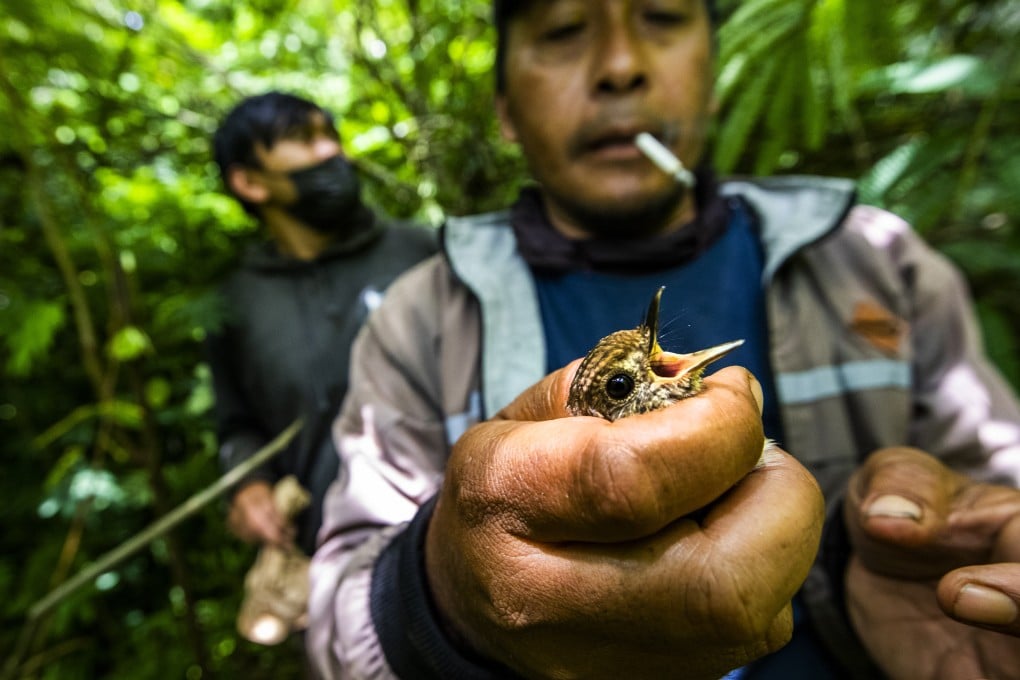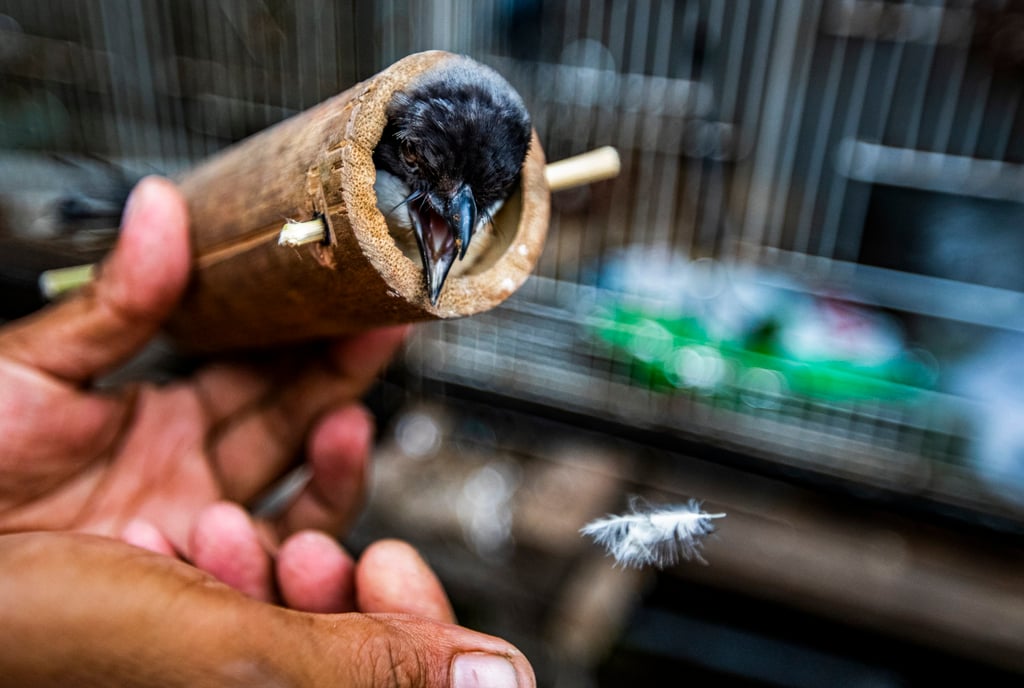Bali’s birds are disappearing, poached for the illegal wildlife trade and sold across Asia. But there may be a solution
- Poachers are responsible for some 20 million songbirds a year being taken from Indonesia’s forests, according to one NGO, a statistic felt particularly in Bali

In dense jungle on the side of a volcano, Putu and his son Wayan move through the undergrowth, selecting a tree and then covering several branches with a sticky, rubbery substance. As Putu barks orders, Wayan takes his Wonderboom speaker, pairs it with his mobile phone and covers it in branches at the base of the tree.
Then they slowly back away, waiting for their prey to be lured in.
Putu says he has been catching birds in Bali, Indonesia, where the capture or trade of wild birds is illegal, since 1998. Back then, the poacher would mimic the bird songs he had learned over time, whereas now, “I just record the bird songs off YouTube.”
Different songs are used to lure different species; some traps like this one are set close to the ground, others up high; and sometimes live birds are used as bait to call in potential mates. Owls, he says, confuse other species, who swoop in to see why an owl would be out in the daytime.

Fifteen minutes pass, and two birds flap helplessly on a glue-slathered branch. Father and son move in, and use minyak telon, a combination of fennel, coconut and eucalyptus oils, to dislodge the birds and place them in holding bags. Some are placed into small plastic or bamboo tubes for transport to market.
